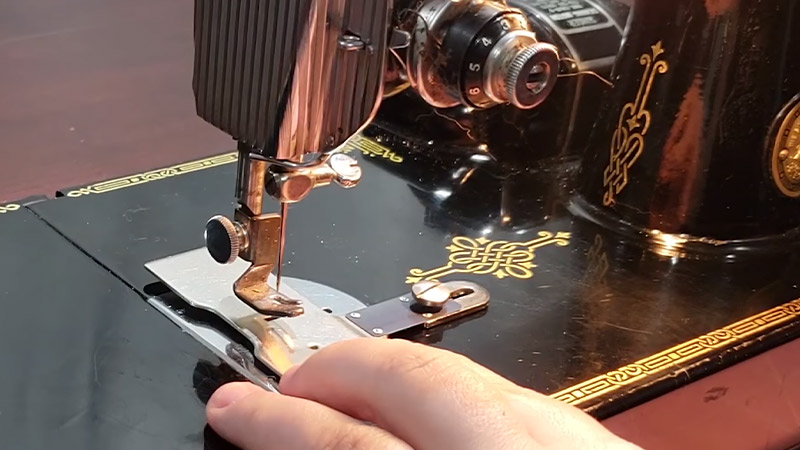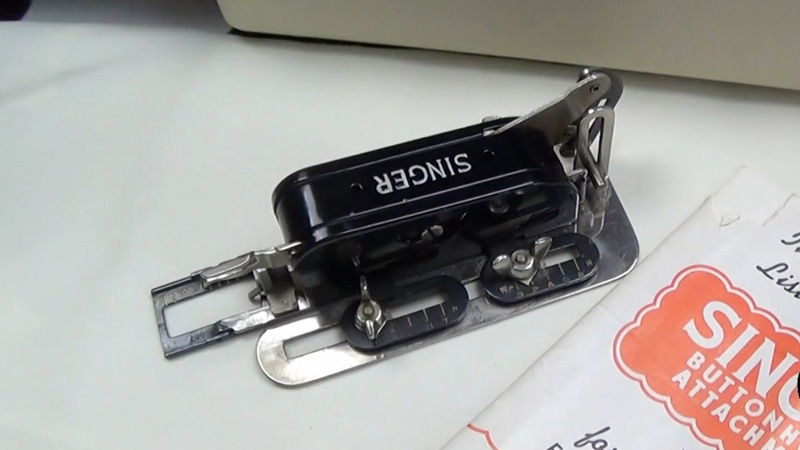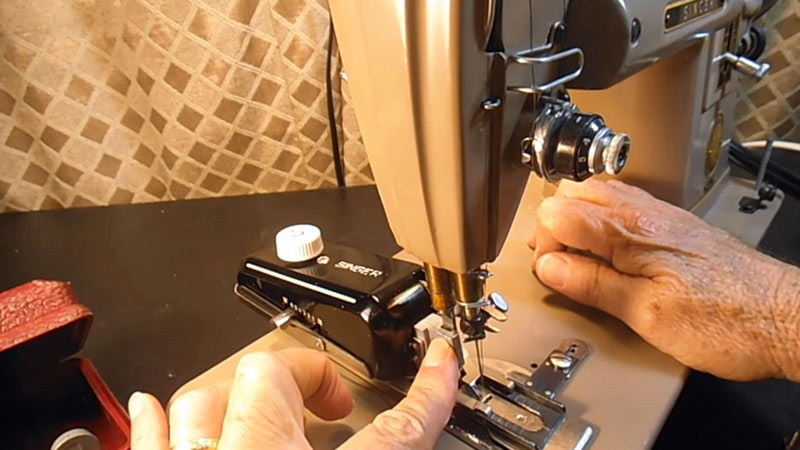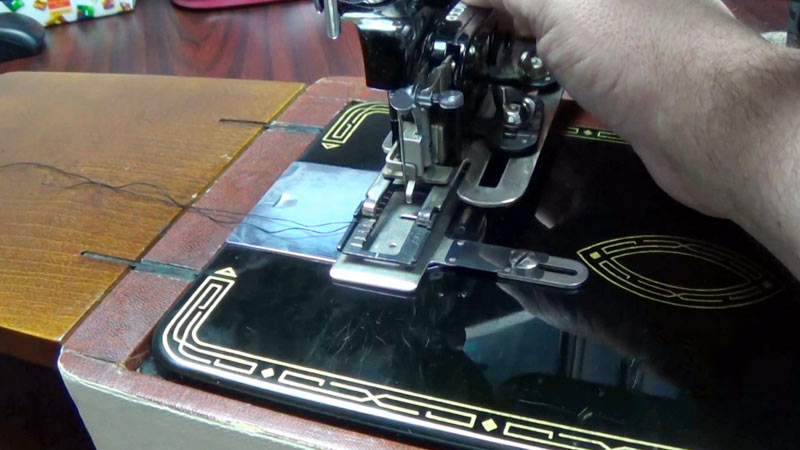The compatibility of Singer buttonhole attachments with their sewing machines is critical for enthusiasts and crafters.
While Singer is a renowned brand known for its diverse range of sewing machines and accessories, the assumption that all Singer buttonhole attachments fit universally across their sewing machines may not hold true.
Singer offers various models with distinct features, shank types, and functionalities, influencing the compatibility of attachments.
This necessitates a closer examination of specific machine requirements and attachment characteristics to ensure a seamless fit.
In this exploration, we delve into the nuances of Singer buttonhole attachments and their compatibility with different Singer sewing machine models.

Do All Singer Buttonhole Attachments Fit All Singer Sewing Machines?
No, Singer sewing machines offer various buttonhole attachments tailored to specific machine models, with compatibility contingent on the machine’s shank type and stitch capabilities.
For example, the Singer Buttonholer Attachment No. 86662 is designed to be compatible with any low-shank, straight-stitch sewing machine.
Conversely, a low-shank, straight stitch machine can accommodate several models of Singer buttonholers.
Ensuring that the buttonhole attachment aligns with the specific Singer sewing machine model is crucial, considering factors such as shank type and stitch functionality.
This ensures optimal performance and functionality, allowing sewers to make precise and uniform buttonholes easily.
Always refer to the user manual or Singer’s guidelines to confirm compatibility and maximize the effectiveness of the buttonhole attachment for your specific machine model.
What Are the Different Types of Singer Buttonhole Attachments?
Singer, a renowned brand in the sewing industry, offers a variety of buttonhole attachments designed to enhance the functionality of their sewing machines.
These attachments cater to different machine models and user preferences, providing versatility in creating buttonholes.
Here are some common types of Singer buttonhole attachments:
Automatic Buttonhole Foot
The automatic buttonhole foot is a technological advancement present in many modern Singer sewing machines.
This attachment simplifies the buttonhole creation process by automating key steps. It measures the button size intended for the garment and adjusts the stitching accordingly.
This saves time and ensures precision, making it an ideal choice for users who prioritize efficiency and ease of use.
The automatic buttonhole foot is a valuable addition for those who want to streamline their sewing projects without compromising on the quality of buttonhole finishes.
One-Step Buttonhole Attachment
Singer offers a one-step buttonhole attachment designed to expedite the buttonhole creation process.
Operating with simplicity and efficiency in mind, this attachment allows users to create buttonholes in a single step.
Compatible with various Singer sewing machine models, it caters to users who prefer a straightforward and accurate approach to buttonhole creation.
This attachment is particularly suitable for those who want to achieve professional-looking buttonholes without the complexity of multi-step processes.
Buttonholer Attachment No. 86662

The Buttonholer Attachment No. 86662 is a classic option from Singer, designed to work with low-shank, straight-stitch sewing machines.
This attachment takes a manual approach to buttonhole creation, offering users hands-on control over the stitching process.
It is a reliable choice for individuals who appreciate the craftsmanship of sewing and want to actively participate in creating buttonholes.
The Buttonholer Attachment No. 86662 is known for its durability and versatility, making it a trusted tool for sewing enthusiasts who value the traditional aspects of the craft.
Slant Shank Buttonholer Attachment
Singer acknowledges the diversity in its sewing machine designs, and there are corresponding buttonhole attachments for models featuring a slant shank design.
These attachments are designed to fit slant shank machines, ensuring proper alignment and functionality.
Users with Singer machines characterized by a slant shank can rely on these attachments for seamless buttonhole creation.
The design precision reflects Singer’s commitment to providing tailored solutions for every machine type, enhancing the overall sewing experience.
Darning Plate for Manual Buttonholes
In situations where specialized buttonhole attachments are unavailable, Singer sewing machines often come equipped with a darning plate.
This plate serves a dual purpose by manually covering the feed dogs and allowing users to create buttonholes.
Although this method demands more skill and control from the user, it offers unparalleled flexibility for crafting buttonholes of various sizes.
The darning plate is a resourceful inclusion for sewers who enjoy a hands-on, creative approach to their projects and value its adaptability without dedicated buttonhole attachments.
How to Attach a Buttonhole Using a Singer Buttonhole Attachment?

Attaching a buttonhole using a Singer buttonhole attachment can be straightforward when following the manufacturer’s instructions. Below is a general guide on attaching a buttonhole using a Singer buttonhole attachment.
Remember that specific steps may vary based on the model of your Singer sewing machine and the type of buttonhole attachment you have.
Select the Buttonhole Attachment
Before beginning the buttonhole creation process, it’s essential to identify the specific buttonhole attachment that suits your Singer sewing machine model.
Consult your machine’s manual or any information provided by Singer to ensure the correct attachment is selected.
Different models may have unique buttonhole attachments, so choosing the right one is crucial for a seamless sewing experience.
Install the Attachment
Prioritize safety by turning off and unplugging your sewing machine. Once done, follow the provided instructions to install the buttonhole foot or attachment.
This typically involves removing the regular presser foot and securely attaching the buttonhole accessory in its place.
Confirm that the attachment is firmly fixed to the machine, ensuring stability during the sewing process.
Choose the Buttonhole Stitch
Depending on your Singer sewing machine model, the buttonhole attachment may work with various buttonhole stitch options.
Some machines feature a convenient one-step buttonhole feature, automating the process, while others may require you to set the desired buttonhole stitch manually.
Refer to your machine’s manual for clear instructions on selecting the appropriate stitch for your specific buttonhole attachment.
Mark the Buttonhole Placement

Accurate buttonhole placement is crucial for achieving a polished and professional look. Utilize fabric chalk or a removable marking tool to clearly indicate the starting and ending points of the buttonhole on your fabric.
Take the time to ensure precise placement, especially if you are creating multiple buttonholes on a garment. This step contributes to a well-organized and aesthetically pleasing finished product.
Set the Stitch Length and Width
The appearance and functionality of the buttonhole are influenced by the stitch length and width settings.
Adjust these parameters on your sewing machine according to the recommendations for buttonhole stitching.
Details on the ideal settings can typically be found in your machine’s manual, providing guidance on achieving the desired results for your buttonholes.
Test on Scrap Fabric
Before embarking on your main project, conducting a test run of the buttonhole attachment on a scrap piece of fabric is highly recommended.
This preliminary test serves multiple purposes, allowing you to verify the selected settings, assess the functionality of the attachment, and make any necessary adjustments.
Testing on scrap fabric ensures that you are confident in the buttonhole creation process, helping prevent errors or imperfections on your final project.
Position the Fabric
With your settings confirmed during the test run, position your actual project fabric under the presser foot.
Align the marked buttonhole placement on the fabric with the corresponding markings on the buttonhole attachment.
Ensure that the fabric is securely positioned to prevent any shifting during the sewing process. Accurate alignment at this stage contributes to the overall precision of your buttonhole.
Start Sewing
Lower the presser foot to engage the fabric and initiate the sewing process. Based on your chosen settings, the buttonhole attachment will guide the sewing machine to create the buttonhole automatically.
Pay attention to any prompts or instructions provided by your machine during this phase, ensuring a smooth and controlled operation.
Secure the Ends
Once the buttonhole is complete, reinforce its ends to prevent unraveling or fraying.
This can be achieved by using a few manual stitches at each end of the buttonhole or securing the threads through the machine’s designated securing function. After reinforcing, carefully cut the threads neatly for a polished and tidy finish.
Repeat if Necessary
For projects requiring multiple buttonholes, replicate the process for each one. Maintain consistent placement and size across all buttonholes to achieve a cohesive and professional appearance.
Taking the time to repeat the procedure ensures uniformity, contributing to the overall quality of your finished sewing project.
FAQs
Are Singer buttonhole attachments universal for all Singer sewing machines?
No, Singer buttonhole attachments are not universal. Compatibility depends on the specific model of the sewing machine, considering factors such as shank type, stitch capabilities, and design features.
How do I know if a Singer buttonhole attachment fits my sewing machine?
Refer to your Singer sewing machine manual or contact Singer’s customer support for information on compatible attachments.
Considering any unique specifications, it’s crucial to match the attachment with your machine’s model.
Can I use any Singer buttonhole attachment for a one-step buttonhole feature?
Not necessarily. While some Singer machines have a built-in one-step buttonhole feature, using the compatible attachment designed for your specific machine model is essential to ensure proper functionality.
Do low-shank and slant-shank machines use the same buttonhole attachments?
No, they do not. Singer buttonhole attachments are often designed for specific shank types.
Low shank, slant shank, and other variations may require different attachments for optimal performance.
Wrap Up
While Singer buttonhole attachments showcase versatility, it is imperative to recognize that they are not universally interchangeable across all Singer sewing machines.
The diverse range of Singer models, each with unique specifications and designs, necessitates carefully matching attachments to ensure compatibility. The misconception that one size fits all may lead to inefficiencies and suboptimal results.
Sewing enthusiasts are advised to consult their Singer sewing machine manuals, explore model-specific guidelines, and seek assistance from Singer’s support channels to identify the precise buttonhole attachment that aligns with their machine’s features.
By acknowledging the nuanced compatibility requirements, users can maximize the efficiency and effectiveness of their Singer sewing machines and associated accessories.
Leave a Reply